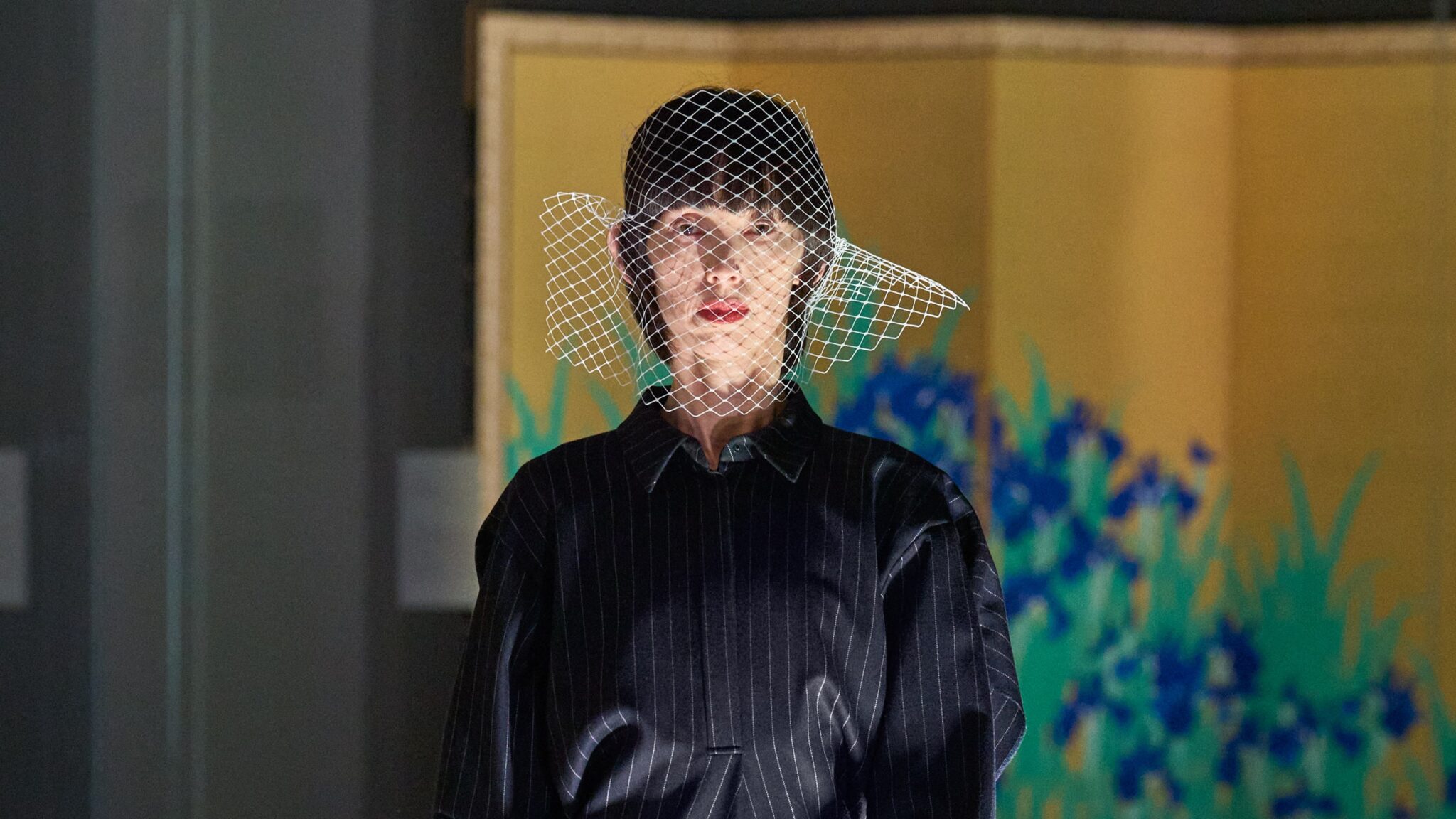“My last collection was about my childhood and my own experiences, but this time I wanted to do the opposite and explore something I had never experienced before: the so-called luxury world.” Yohei Ohno said this after his fall show, which took place at the Sen-Oku Hakukokan Museum in Tokyo. For a child growing up in rural Japan, far from any sense of glitz and glamour, it was an exercise in approaching luxury as an alien concept.
The clothes – towel bathrobes, comfortable tracksuits, silk blouses and dramatic dresses – showed the naive ideals of what Ohno interpreted as a wealthy lifestyle. “It’s about the lives of the rich seen from the perspective of a non-rich person, and the world of adults seen from the perspective of a child,” he explained. Coats swept asymmetrically to the side, cascades of fabric hung over the arm: a caricatured pose of what Ohno imagined as a wealthy woman carrying a handbag. Elsewhere, architectural vests (that were actually handbags) were decorated with argyle prints, and Ohno applied his faux-sportswear-inspired logo from last season to golf shirts – another nod to that high-low mix. Vivienne Westwood’s draping was also an influence – you could clearly see it in the twisted dresses – but Ohno is good at putting his own spin on it.
He had also made a brutal critique of what he saw as a quintessentially Japanese luxury ideal, referring to Burberry Blue Label – a now-defunct brand in Japan that licensed the British company’s designs, often to questionable effect – as a another ironic point. of reference. “I wanted to poke fun at the sense of luxury that Japanese people have. I wonder why everyone is trying to imitate European luxury brands,” he said. It’s a great question, and refreshing to see a designer from Tokyo answer it with such self-awareness and humor.
Overall, he’d given himself a difficult concept to reckon with, and by the end of the show it wasn’t clear whether he’d nailed it, but Ohno has an undeniably unique point of view that’s always a joy to watch. . To see it at its best, this collection was about confronting an uncomfortable sense of longing: longing about the vast divide between country bumpkin and city slicker; the struggling masses longing for more; and perhaps a young, sensitive child from nowhere in particular, who peers out at the wider world with all its unmentionable pretensions, and longs to be part of it.





